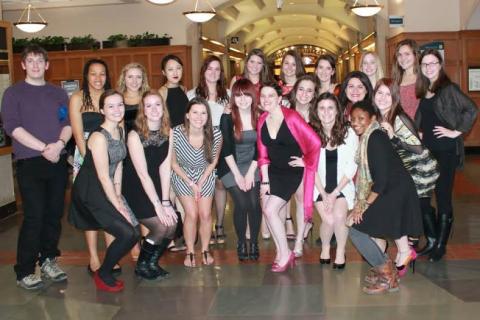Understanding Different Perspectives in Violence Prevention Work
When assembling Telling the Untold Truth (TUT), a workshop series designed to raise awareness about uncommonly discussed narratives of sexualized violence, one of the most challenging aspects was to navigate all the differences in opinion and experience that came from joining together so many different groups. There were a range of people and identities represented through our partner group, the Diversity Affairs Council of LSA Student Government, and our collaborators; HEADS, the Spectrum Center, and the Coalition for Queer People of Color (CQPoC). We all came in with different goals and expectations and had to navigate between these for a common agenda. One of the ways we did this was to create a mission statement for TUT that clearly stated SAPAC and DAC goals while still remaining flexible enough to allow collaborators to add their unique vision for the event through a set a goals we created together. This way everyone had a say in the event. This was the really amazing thing about TUT. Everyone there, even the students doing social justice work for years, learned something new from working with another group that focused on a different issue from theirs. We all left with a better understanding of how our work fit together.
Balancing all of this while creating educational content for each session was difficult enough without adding the extra stress that comes from logistics and advertising of large events. The behind the scenes work was done mostly by SAPAC and made possible by grants like that from BLI. The BLI Small Grant specifically went to our advertising budget to create a two part advertising campaign. We printed large-scale, full color fliers that advertised the series as a whole that were distributed in permanent display boards across campus. There were also individual event posters in black and white that we printed and distributed before each event as a more focused advertising approach. We believe this was a successful strategy because the series was clearly marketed as whole while still providing detailed information on each individual event. However, it was a challenge to keep the advertising consistent. This meant we had to be sure to re-poster the same areas, have three Facebook events, have three sets of posters made with similar design, and to have publicity before or after each one. To keep this better organized in the future we plan to make an advertising checklist that details the necessary steps to adequately publicize each event. We were greatly happy with the turn out for each one, between 50-60 people per event, and so we will continue with the advertising strategy we have while making improvements. Like any first time event, there were many lessons learned when putting on TUT that were both logistical and interpersonal which will only help us expand the event in the future. Many people, even those involved with planning, learned more about how social identities influence our understanding or experience of sexualized violence. By far the most important lesson was to understand how integral this understanding is to violence prevention work. Moving forward in SAPAC, this is a lesson we will carry with us and I’m sure that our partner and collaborator organizations will as well.




